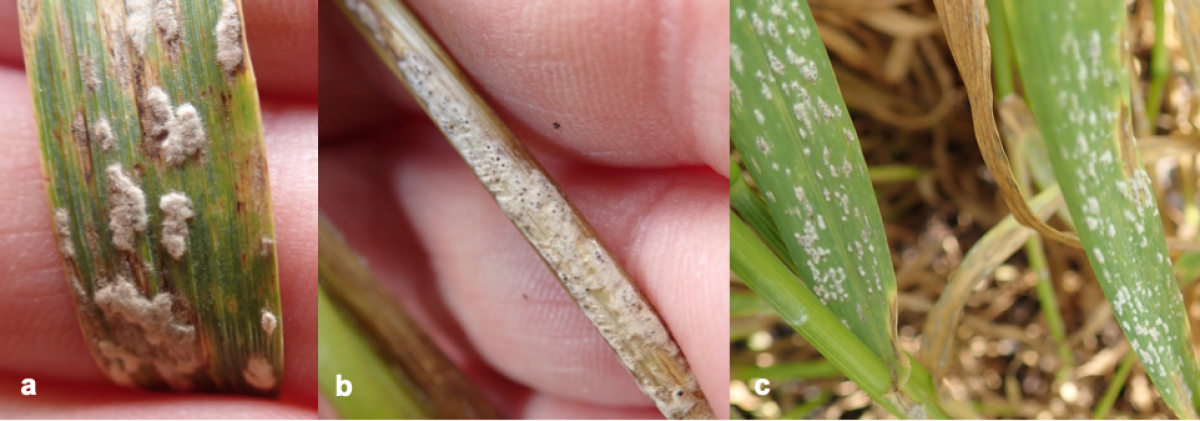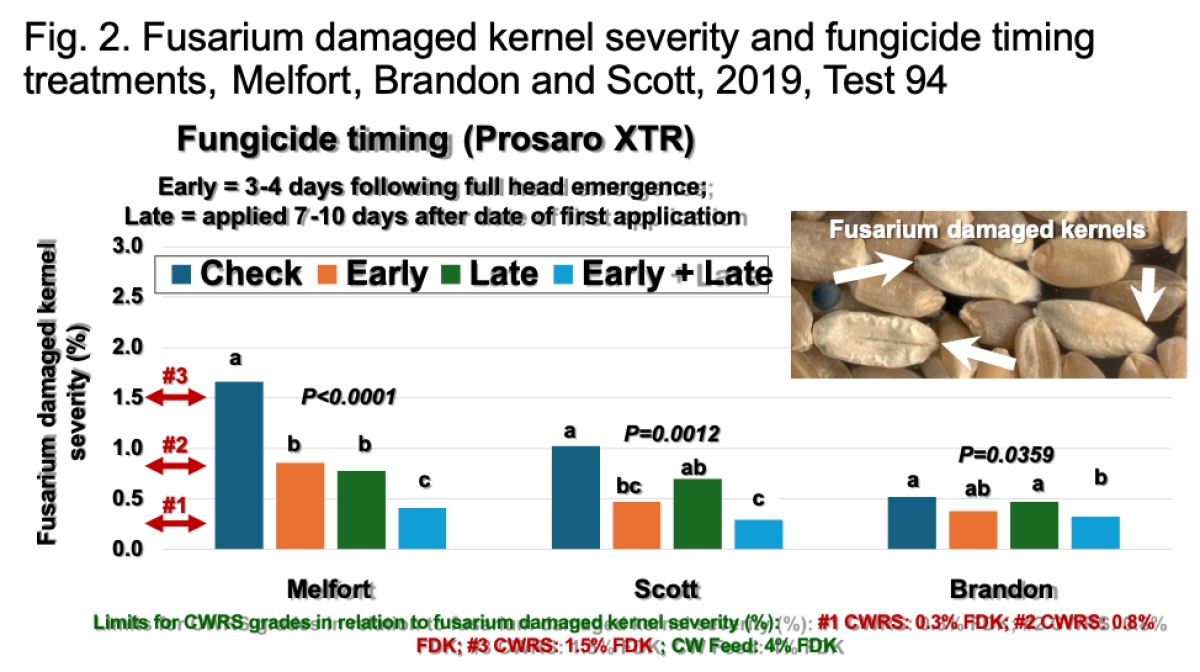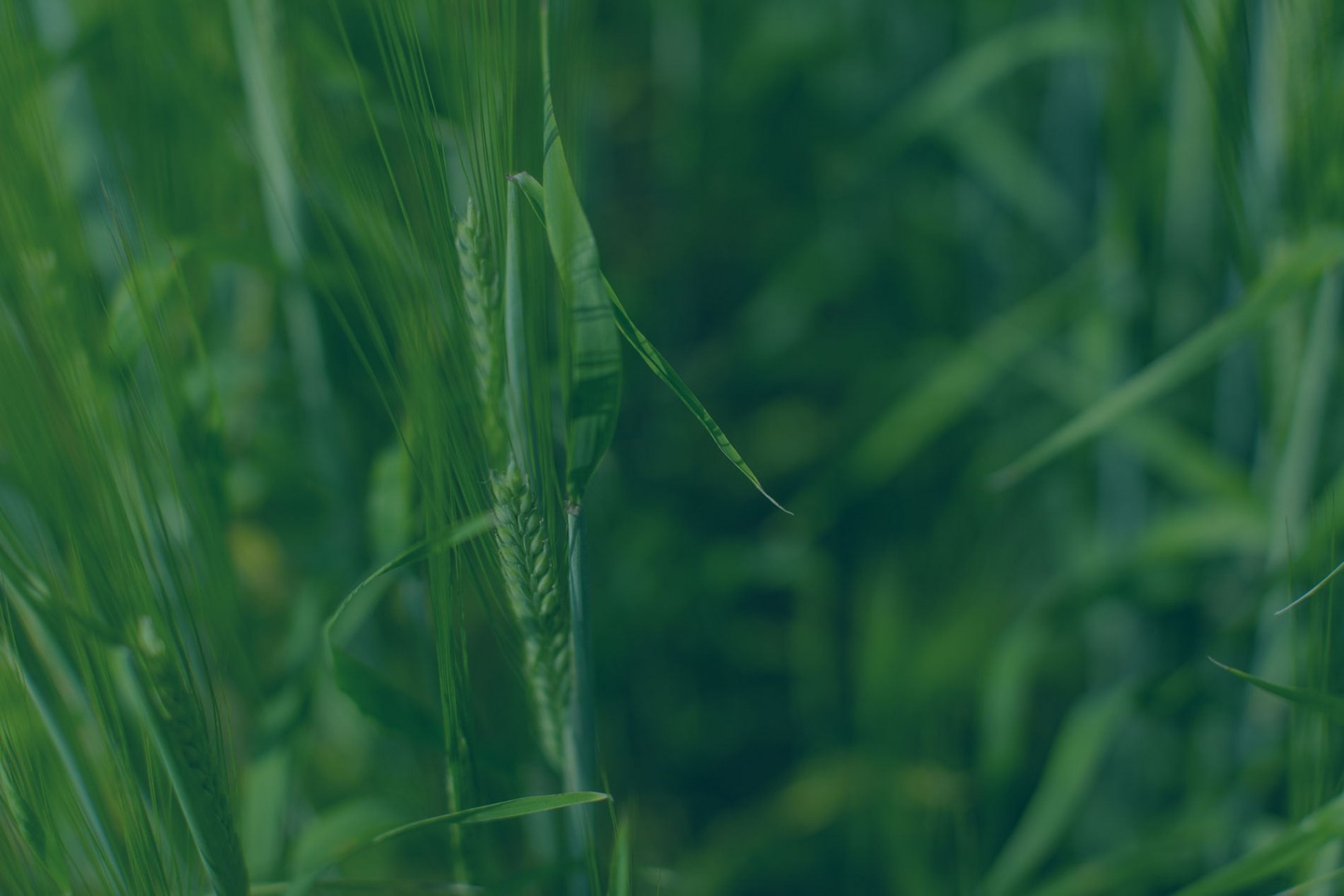Questions of the month - July 2024
Is it powdery mildew?
Powdery mildew has been found in southern Alberta wheat and durum fields. The fungal disease is diagnosed by fluffy, greyish-white mycelium on the upper surface of leaves. With older infections, the mycelium and conidia/conidiophores may age and turn off white. With very old infections, you start to see cleistothecia production (fruiting bodies) which is the sexual fruiting stage. They are black in colour.

Figure 1. Powdery mildew symptoms. a-c: symptoms on leaf, stem, and in canopy. Photo credit: Dr. Kelly Turkington.
The pathogen overwinters in infected stubble and/or green bridge. Mild temperatures and high humidity (including canopy humidity) favour the development of powdery mildew. In addition, disease development is more rapid on susceptible varieties.
If I find powdery mildew, how to manage it?
In-season management:
Fungicide is an effective tool in managing powdery mildew in-season. Before making the decision, consider a few things:
- How susceptible is the variety?
- The growth stage of the crop and if the disease starts to move up the canopy.
- How favourable is the weather outlook? If it is humid and mild, the risk for further infection is high.
When disease pressure is present, a fungicide application can be used to protect the most yield-important leaves. Time the fungicide to protect the flag and penultimate leaves. Refer to Alberta’s Crop Protection Guide (The Blue Book) for fungicides registered for powdery mildew.
Integrated management:
- Avoid growing wheat on wheat stubble from highly infected crops. Same for barley.
- Choose varieties that have better powdery mildew resistance.
- Use a balanced fertility program based on soil test results. Avoid excessive nitrogen as it produces dense canopies that favour powdery mildew.
For more information on powdery mildew management, click here.
What is the window to spray for Fusarium Head Blight (FHB)?
Wheat and barley have a wide window of being susceptible to FHB. The window spans from head emergence to the start of senescence. The florets that are infected in earlier stages are more likely to develop visual FDK. However, the kernels that get infected later may not show any visual FDK, but can still contain mycotoxins like DON.
The optimum fungicide timing to protect wheat against FHB is 3-4 days after head emergence, or when anthers just start to extrude from the middle portion of wheat head. For barley, it is when heads fully emerge. DO NOT rush to spray fungicides before the head has fully emerged. The fungicides are only locally systemic, which means good coverage is required to achieve good protection.
If the optimum window is not feasible, keep in mind that spraying 7-10 days after the optimum timing is still effective (as shown in the graphs below). If FHB risks are present, spraying late (during late flowering to early grain filling) is still effective in reducing FDK and DON. Double-check pre-harvest intervals before putting a late fungicide on.

Slide courtesy: Dr Kelly Turkington.
Sawfly adults are emerging
Wheat stem sawfly adults have been found in southern Alberta in the last week of June. This means the female sawflies will lay eggs soon and the larvae start to feed on the inside of the stem.
Unfortunately, in-season control measures are limited. Insecticides are ineffective in controlling wheat stem sawfly. In addition, insecticides may harm the parasitic wasp species which helps keep sawfly populations down. Successful management requires an integrated approach including solid-stem varieties, seeding practices, cultural practices and proper soil fertility.
For management strategies, refer to Wheat Stem Sawfly - Overview.
Watch the video: Growing Smarter – Wheat Stem Sawfly
-large.png)

